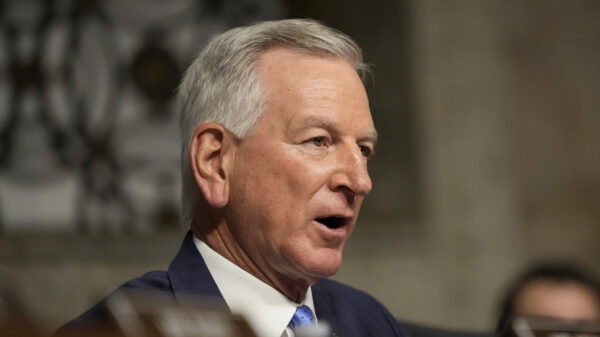A recent report by the federal government, backed by another in the UK, estimates the COVID-19 pandemic in the U.S. “will last 18 months or longer and could include multiple waves of illness.”
The 100-page unclassified COVID-19 response plan drafted by the U.S. Department of Health and Human Services and obtained by The New York Times predicts the viral outbreak will strain the country’s health care system and local governments, disrupt supply chains and require a massive response from multiple agencies.
It’s a stark forecast for a disease that’s still in its relative infancy in the U.S. but is already taking lives in greater numbers, closing bars and restaurants to regular business, shuttering schools and beaches, and keeping people at home.
The 18-month prediction isn’t reflected, however, in predictions by President Donald Trump, some members of his administration or public health officials in Alabama, many of whom say the crisis will largely be over within 4 months or so.
Efforts to mitigate COVID-19 through social distancing works, health experts say, but the virus is new, and researchers are just getting a handle on what it can do and how to save lives.
As Americans hunker down, or at least those who heed pleas to do so, many wonder how long before it’s over, and just what “over” really means.
The federal government’s assumption of 18 months and multiple outbreaks is shared by researchers at the Imperial College London, which released a report Tuesday that warns of many, many months of periodic disruptions to public life in the U.K. and the U.S. The Imperial College London’s models are considered the gold standard in epidemiological research and often influence government responses to pandemics.
“We conclude that the effectiveness of any one intervention in isolation is likely to be limited, requiring multiple interventions to be combined to have a substantial impact on transmission,” researchers state in the UK report.
What those researchers found is that social distancing does reduce the number of new cases and deaths, but that its practice needs to be sustained to prevent further outbreaks. Researchers defined social distancing as “All households reduce contact outside household, school or workplace by 75%.”
If we practice social distancing, and add to that school closures and home isolation of confirmed cases, for approximately two-thirds of the outbreak, we would save the most lives and bring it to an end as quickly as researchers believe possible, but even so, it wouldn’t happen fast.
“To avoid a rebound in transmission, these policies will need to be maintained until large stocks of vaccine are available to immunize the population – which could be 18 months or more,” the researchers found.
But what if we decide to do nothing?
Without changes in social habits researchers predict “81% of the GB and US populations would be infected over the course of the epidemic” which could mean 2.2. millions lives lost in the U.S. and 510,000 in Britain.
And it wouldn’t take long to start feeling that pain. Do nothing and the report predicts by the second week of April critical care bed capacity in the U.S. would be exceeded, and eventually peak at 30 times capacity.
And as APR reported on Wednesday, Alabama’s hospitals are at great risk of being overburdened if the public doesn’t adhere to social distancing policies.
Alabamians are also at greater risk for serious complications and death from COVID-19, health experts say, because of high rates of obesity, diabetes, and heart disease.
And there remain problems with shortages of testing supplies and access to critical life-saving equipment such as ventilators and ICU beds, in Alabama and across the country. That might get worse before it gets better, those researchers found.
“Supply chain and transportation impacts due to ongoing COVID – 19 outbreak will likely result in significant shortages for government , private sector, and individual U. S. consumers,” the HHS report reads.
Ask others in charge, however, and the picture is much rosier.
Alabama’s state health officer Dr. Scott Harris predicted Tuesday a much shorter lifespan for the outbreak, a message also shared by Trump earlier this week.
Asked how long state officials expect the virus could last, Harris told reporters “So I think with respiratory infections, a three or four month course is a reasonable place to start guessing how long it’s gonna last.”
Trump, speaking Monday of how long the crisis might last, said “people are talking about July, August.”
Dr. Anthony Fauci, the head of the National Institute of Allergy and Infectious Diseases, whose become the face of the Trump administration’s medical response to COVID-19, said Sunday that “it’s going to be a matter of a few weeks to a few months, for sure.”
And what about China, where COVID-19 was first discovered in December 2019? On Thursday, China reported no new cases of COVID-19, a major milestone for a country that’s lost more than 3,200 people to the disease.
But experts warn that China’s statistics on the number of infections may not be accurate – officials there initially tried to conceal the virus – and the country’s harsh crackdowns on the movements of millions of its citizens, who face dire consequences if they disobey, isn’t likely to be replicated in the U.S.
Maciej Boni, PhD, of the Center for Infectious Disease Dynamics at Pennsylvania State University, told the CIDRAP News that the 18-month prediction is the most likely scenario based on the current pandemic.
“This has been trickling out to the public since [the] last week of February,” Boni told CIDRAP News. “Now the public is ready to hear that 1 to 2 million people could die, which is what we [epidemiologists] have said for 3 weeks.”



















































